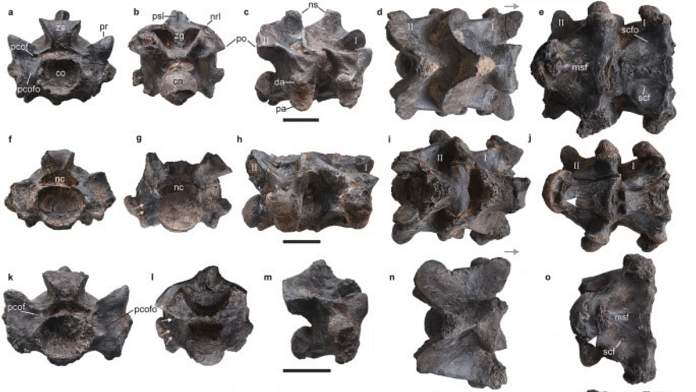Bengaluru: A team from IIT-Roorkee has discovered a new species of giant snake — one of the longest and largest snakes through history — which roamed in the Indian subcontinent millions of years ago.
Fossil remains from the Panandhro Lignite Mine in Kutch, Gujarat threw light on the new species — Vasuki indicus — that lived around 47 million years ago. In Hindu mythology, Vasuki is the king of the snakes and worshiped on Naga Panchmi.
Vasuki indicus is estimated to have reached lengths of up to 15.2 meters, and is comparable to the longest snake ever known, the extinct Titanoboa.
“It is worth noting that the largest body-length estimates of Vasuki appear to exceed that of Titanoboa, even though the vertebral dimensions of the Indian taxon are slightly smaller than those of Titanoboa,” the authors — Debajit Datta and Sunil Bajpai of Department of Earth Sciences, IIT Roorkee — said in their study published this week in the journal Scientific Reports.
The authors suggest that the reptile’s large size made it a slow-moving ambush predator among snakes, much like the modern anaconda.
The snake belongs to the Madtsoiidae family, which spread out across continents including Europe, Africa, and Asia. The findings lead the scientists to suggest that Vasuki indicus is representative of a large lineage of madtsoiids that originated in the Indian subcontinent and spread to Europe, before reaching Africa some 50 million years ago, approximately about 15 million years after the dinosaurs were wiped out.
Vasuki is a new family (genus) of snakes by itself, and joins the list of these extinct madtsoiids. The discovery comprises 27 fully preserved vertebrae, whose analysis revealed that the family of snakes had a large and strong vertebral column, which was among the largest of all proportions seen in madtsoiids.
Madtsoiidae are an extinct family of terrestrial snakes that existed in the Indian subcontinent for around 100 million years from the Late Cretaceous to the Late Pleistocene (about 98 million years ago, to about 11,000 years ago).
By the Late Cretaceous, the last supercontinent, Pangea had already broken up into the northern Laurasia containing North America, Europe, and Northern Asia; and the southern Gondwanaland, which consisted of modern-day Africa, South America, Antarctica, Australia, and the Indian subcontinent.
These snakes existed in Gondwanaland, and spread through it, reaching other continents before the continents separated from each other. Madtsoiids have been discovered in many parts of the Indian subcontinent, with a rich fossil history from modern-day Pakistan. Many modern-day snakes in the southern hemisphere are evolutionary descendants of madtsoiiids.
Researchers speculate that the warm tropical temperatures in Gondwanaland, at about 28°C, would have led to the size and growth of this massive reptile; it is well-established that the warmer the ambient temperature, the larger the animals are able to grow.
The findings of ancient fossils and their distributions also spreads light across how continents separated to their modern-day positions. The latest discovery adds evidence to Madtsoiids as originating during the Gondwanan period in the Indian subcontinent and spreading themselves across the landmass before it broke up.
Through the new findings, the authors were also able to confirm that the snakes reached Africa by first spreading through southern Eurasia during the Eocene epoch, between 55 million years ago to 33 million years ago — which is about 10 million years after the dinosaurs died out and gave evolutionary time for these snakes to evolve into large predators.
(Edited by Tony Rai)
Also Read: Elvish case puts spotlight on snake venom — science behind the bite & the high that follows



